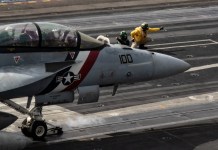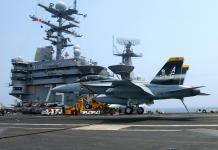The United States of America is one of the nations alongside Russia which has no dearth of options when it comes to the different types of fighter jets, cargo planes, bombers, and drones, with sightings of testing of newer aircraft not a rare phenomenon in the different parts of the country.
So, it was not really a surprise when an unidentified aircraft was spotted over the Military Operating Area at Edwards Air Force Base in California by an observer, who then posted the picture on his social media Instagram handle, before deleting it.
The observer whose name is Rob Kolinsky running by the handle, Sundowner Studios, said that the aircraft bore resemblances to the B-21 bomber. However, the funny thing is that the B-21 Raider stealth bomber which Kolinsky spoke about is America’s latest stealth bomber which is currently under development by aerospace giants Northrop Grumman.
Weeks ago over Ca ?…..real or not..@TheDEWLine #aviation pic.twitter.com/fX207LxIUG
— The Shadow of the Eagle (@clemente3000) November 2, 2020
The actual aircraft which he caught on the camera is said to be an aircraft which the United States has kept under a blanket of secrecy throughout its brief history of operations— the aircraft while bearing similarities to the B-21 is not really a stealth bomber, but a high-altitude spy drone whose existence has never been confirmed by the Pentagon— the mysterious aircraft is the RQ-180.
Having its first flight in 2010, the US Air Force secretive spy drone was Washington’s answer to finding a means to penetrate enemy air defenses with a far-flying reconnaissance craft.
According to the trade publication, Aviation Week, the RQ-180 is the first aircraft to possess the potential of matching the recon capabilities of the Mach-three SR-71 Blackbird recon aircraft since the late 1990s.
The aircraft has been operational for the last three years, with the flying branch now setting up a forward base in Guam as they prepare the radar-evading drone on missions over the Pacific region.
However, despite the developments, the spy drone has failed to have been given acknowledgment by the US Air Force, with Aviation Week being the publication in 2013 to break the news of the drone’s development.
Following the report, in 2019, the publication carried out an in-depth feature tracking the unit changes that could support a fleet of seven RQ-180s. According to Aviation Week reporter Guy Norris,
“There is a growing body of evidence that the stealthy vehicle is now fully operational with the U.S. Air Force in a penetrating intelligence, surveillance and reconnaissance role.”
The twin-engine, unarmed, uncrewed Northrop Grumman RQ-180 drone is an American stealth unmanned aerial vehicle (UAV) surveillance aircraft intended for contested airspace, which utilizes a flying wing design to minimize radar return.
Nicknamed the “Great White Bat” and “Shikaka”, by the Edwards Air Force Base personnel, the 170-feet-wingspan RQ-180 is similar in size to the RQ-4 Global Hawk unmanned aerial vehicle (UAV).
The flying-wing RQ-180, which weighs roughly 15 tons at takeoff and can operate for 24 hours at ranges in excess of 1,200 nautical miles (2,100+ km) from its base, has been stated to be similar in shape to the Northrop-designed B-2.
While the unmanned RQ-180 is smaller than the manned bomber, it features design improvements that Northrop also is including on the new B-21 bomber which is being built for the US Air Force.
Most importantly, the spy drone is considered superior in terms of radar stealth to the F-117, F/A-22, and F-35 aircraft with the airframe’s design optimized to provide protection from low- and high-frequency radar emitters from all directions.
Moreover, the drone’s advanced aerodynamics is intended to increase the range, flight altitude, and time on station, and it is touted to have major say in any potential conflict against China. According to David Axe, Defense Editor for the National Interest,
“By 2017 the RQ-180 was ready for initial deployment. To support the drone’s long-distance missions, the 9th Operations Group stood up two new detachments. Detachment 3 is at Beale Air Force Base in California, while Detachment 4 is at Andersen Air Force Base on the Pacific territory of Guam,”
Andersen is the Air Force’s main hub for large aircraft operations over the Western Pacific, and would play a major role in a military confrontation with China.”




